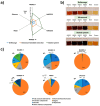The Versatility of NADES Across Applications
- PMID: 41097284
- PMCID: PMC12525562
- DOI: 10.3390/molecules30193862
The Versatility of NADES Across Applications
Abstract
Natural deep eutectic solvents (NADES) are produced by combining natural compounds, such as sugars, amino acids, or organic acids, to form a liquid at room temperature. Compared to other solvents, NADES own several strengths, including cost-effectiveness, ease of preparation, tunable properties, biorenewability, and biodegradability, making them suitable for a wide range of industrial sectors. Research on NADES requires careful consideration of their composition and physicochemical properties, as these can significantly influence their range of applications. In this context, the main objective of this review is to provide insights into the application of NADES in different areas that go from enzymatic processes and extraction of bioactives to the formulation of pharmaceutical and cosmetic products. This review includes several case studies on the use of enzyme-NADES systems (lipase and laccase) to synthesize new materials and on the extraction of bioactives with NADES, highlighting their direct application in cosmetics and pharmaceutical formulations.
Keywords: Pharma-cosmetics; deep eutectic solvents; enzymatic processes; extraction; sustainable solvents.
Conflict of interest statement
The authors declare no conflicts of interest.
Figures





References
Publication types
LinkOut - more resources
Full Text Sources

